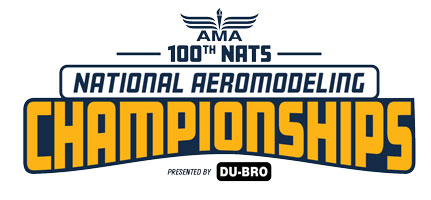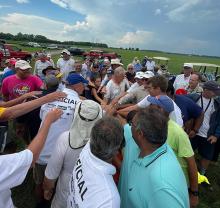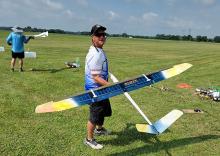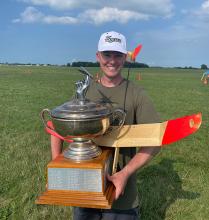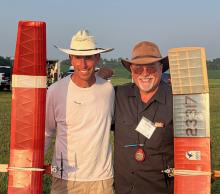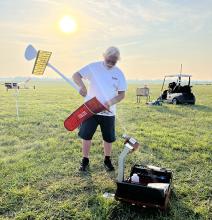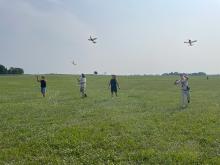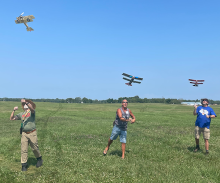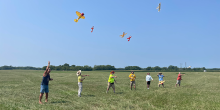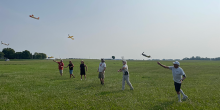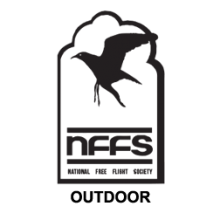
For detailed information see the IAC Calendar.
FF models are under no control from the builder/flier after they are released for flight. Controlled flight is achieved through preset adjustments and onboard timers and or fuses that control various functions such as engine cutoff, transition from climb to glide, and recovery. Most Outdoor FF events are duration contests; the longest total flight time wins. Restrictions on fuel, engine size, rubber motor, or towline length are among the ways performance can be limited, thus making long flight times difficult to achieve. To lessen the chance of a single lucky flight winning an event, and to reduce the risk of lost models, flight times are limited to a maximum per flight that will keep the models within the boundaries of the field. Should a contestant achieve three maxes in six flight attempts, a sudden-death flyoff is held until tie scores are broken or a winner is determined. Recovery of FF models is generally achieved with some sort of dethermalizer, which is a device designed to prevent the aircraft from being carried great distances by updrafts of warm air called thermals. The device deflects major control surfaces, which stops forward flight and brings the model floating back to Earth.
